Posts Tagged: bedbugs
Teach 'em When They're Young
Nazzy Pakpour has a way with kids. At a recent Bohart Museum of Entomology open house, she read passages from her newly published...
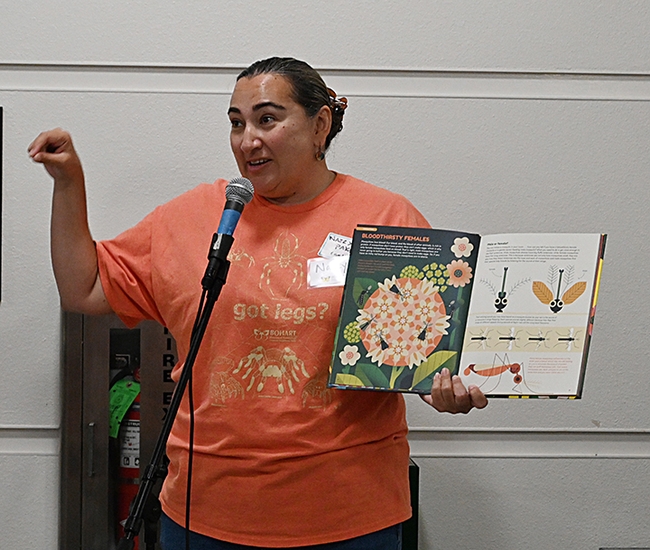
UC Davis alumna Nazzy Pakpour, who holds a doctorate microbiology, virology and parasitology from the University of Pennsylvania, reads from her children's book, "Please Don't Bite Me," at a recent Bohart Museum of Entomology open house. (Photo by Kathy Keatley Garvey)
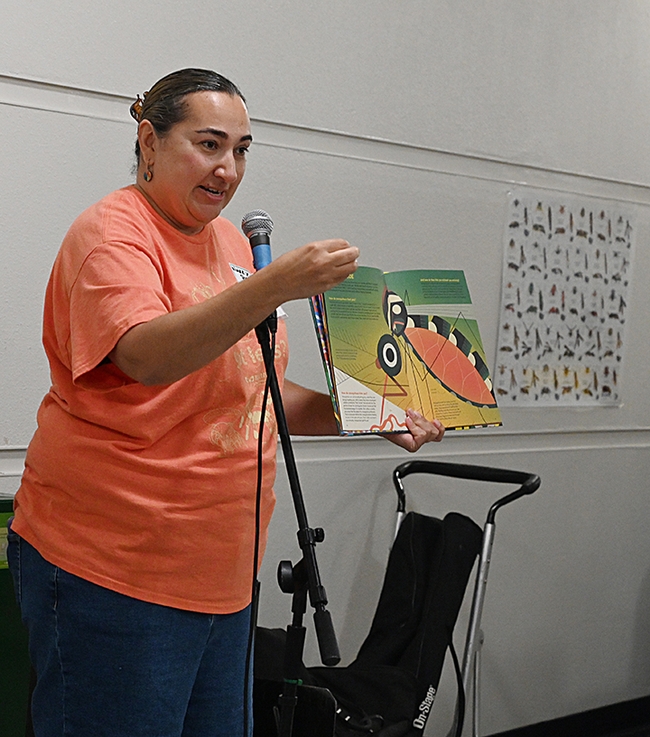
Nazzy Pakpour discusses fascinating facts about mosquitoes, lice, wasps, cockroaches, fleas, and bedbugs. She was a special guest at a Bohart Museum of Entomology open house. (Photo by Kathy Keatley Garvey)
Bedbug eradication requires tenant cooperation
To successfully eliminate bedbugs, pest management professionals say they need the cooperation of people living the pests, according to a survey conducted by UC Agriculture and Natural Resources scientists.
California's pest management pros are divided over whether they believe that some of the state's bedbug populations are resistant to insecticides, but they agree that the bugs may survive treatments by finding safe harbor in excessive clutter and personal items that tenants didn't want treated or thrown away. In addition, some settings – such as hotels, motels, college dorms and homeless shelters – may be continually reinfested.
Bedbugs are among the most challenging and expensive pests to manage. Because they are so difficult to eradicate, the job is typically left in the hands of pest management professionals, who face an increasing number of bedbug infestations in California.
UC ANR scientists are working closely with pest management professionals in the state to find ways that will make bedbug eradication easier and more likely to succeed.
Bedbugs co-evolved with humans, and feed exclusively on blood. Their preferred habitat is inside warm rooms near where humans sleep and rest. Bedbugs are drawn to the carbon dioxide that humans exhale with every breath, and they seek out a blood meal by piercing the skin of a sleeping person. A few minutes later, they scurry back to hiding places.
According to an often-referenced annual report conducted nationwide by Orkin Pest Control, the San Francisco Bay Area is No. 14 on the list of 50 cities with the most calls for help controlling the pest. Sacramento-Stockton-Modesto, now at 27, jumped 14 spaces from 2013 to 2014. Los Angeles is fourth on the list, the highest of any area in California. A Terminix report said bedbug calls in Sacramento increased 54 percent from 2012 to 2013, more than any other city in the nation.
“Increases in bedbug infestations may be partly due to changes in the way we manage household pests,” said Andrew Sutherland, the urban integrated pest management advisor for UC ANR in the Bay Area. “In the 1930s and 40s, DDT was commonly used indoors. The pesticide is very persistent and effective and controlled all indoor pests, including bedbugs, sometimes for years.”
When Sutherland was hired three years ago, he realized there was little information available about obstacles to bedbug control in California.
“Most of the information about bedbugs is from research taking place in the Midwest and the Eastern Seaboard,” he said.
UC ANR awarded funds to Sutherland and Dong-Hwan Choe, a UC ANR urban pest specialist based at UC Riverside, to collect data from those who were on the frontline in the battle against bedbugs – pest management professionals and managers of multi-unit housing facilities. The researchers later received funds from the USDA's Western IPM Center to expand the study to 13 western states.
Early results of Sutherland and Choe's surveys showed that 75 percent of pest management professionals said bedbug infestations in 2014 had increased from the previous year. Forty percent said they believed they have encountered bedbugs that were resistant to insecticides, while 60 percent said they had not.
“There was no correlation between the amount of experience the professionals had and their perception about bedbug resistance in California,” Sutherland said.
The most common way for professionals to become aware of bedbug infestation has been visual inspections after complaints by tenants. Now, prevention is on the rise, an important component of integrated pest management.
“Our objective is to manage pests below unacceptable levels with minimal negative impacts on communities and the environment,” Sutherland said. “Prevention comes before all other management practices.”
The survey found that pitfall traps (interceptors) are used at least sometimes by 40 percent of pest management respondents to monitor for the pests. Active monitors, glue board monitors and harborage or shelter monitors are also employed.
The pest management professionals reported using a wide variety of treatments against bedbugs. Insecticides were most common, used by 91 percent of respondents most of the time. Desiccants, encasements and heat were used most of the time by about half of respondents.
Housing managers had similar responses to the survey questions. Bedbug control is challenging, they reported, when tenants don't report infestations, are not willing or able to prepare their living space for treatment, when tenants bring secondhand furniture into their units, and when they fail to take information about the pest seriously.
One housing manager respondent complained about an “almost total inability to prevent infestation, or to prove its source and (having to shoulder) almost total responsibility for all concomitant costs.”
For detailed information on bedbug life cycle, detection and treatment, see the UC IPM Pest Note on bedbugs.
An initiative to manage endemic and invasive pests and diseases is part of UC Agriculture and Natural Resources Strategic Vision 2025.
Bed Bugs at the Bohart
Bed Bugs at the Bohart? Indeed. Those attending the Bohart Museum of Entomology's open house on Saturday, Feb. 2, will see them--and see them...
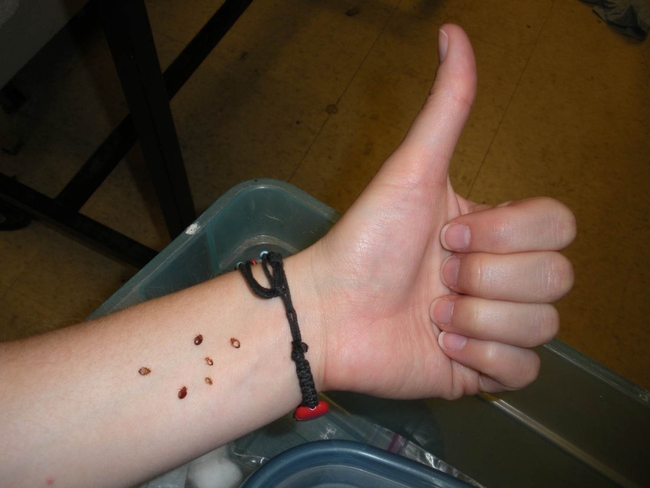
The arm of Danielle Wishon and her bedbugs, feeding.

Close-up of a bedbug in the process of ingesting a blood meal. (Photo courtesy of the Centers for Disease Control for Prevention, image by Piotr Naskrecki)
Don't Let the Bedbugs Bite
Forensic entomologist Bob Kimsey (right) of the Department of Entomology, University of California, Davis, studies bedbugs--those little bloodsuckers...
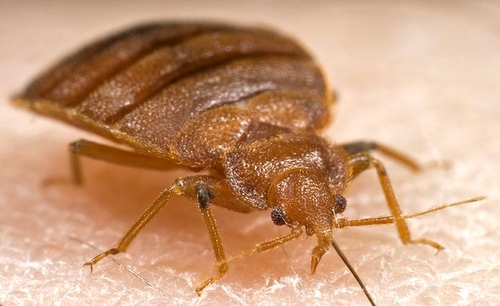
Bedbug
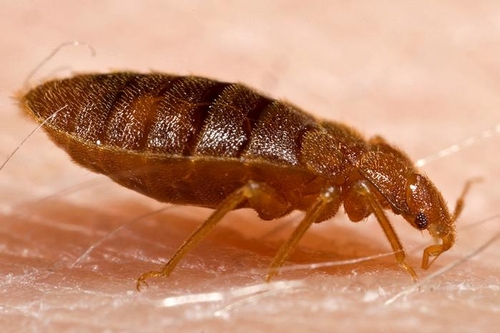
Close-Up



